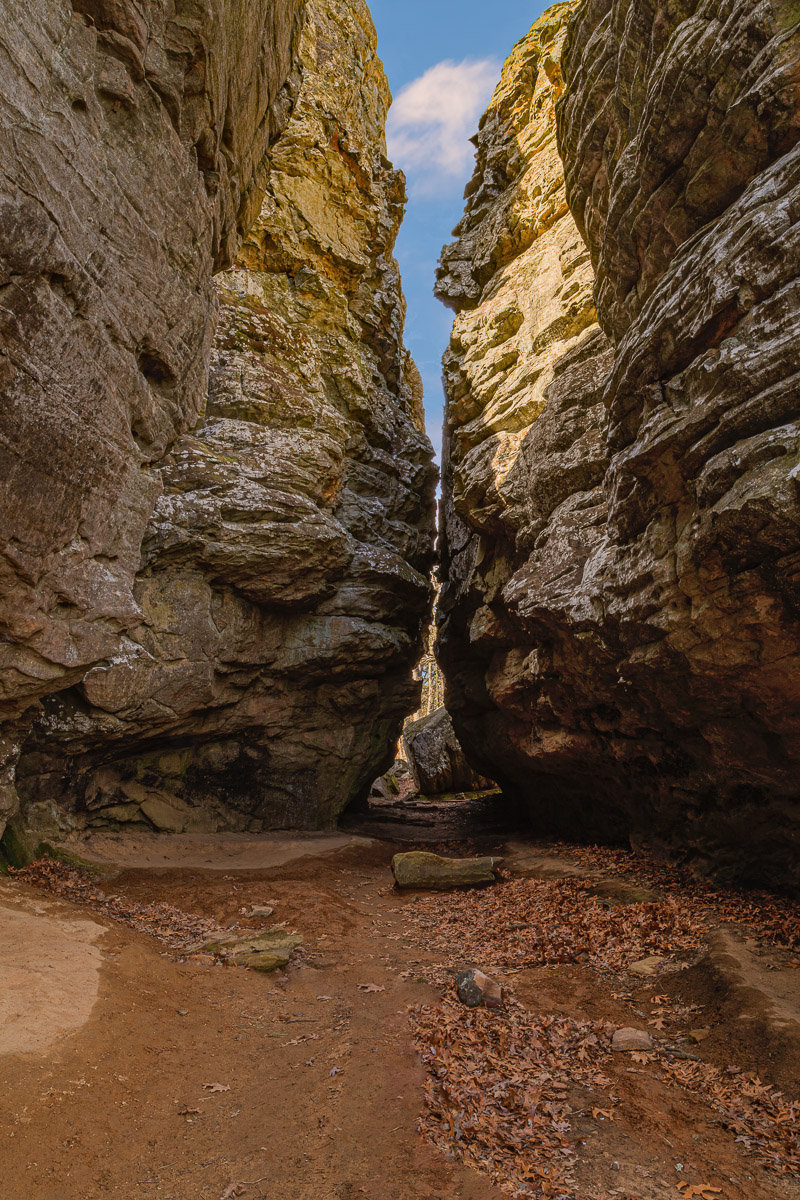Petit Jean State Park’s Bear Cave trail is home to numerous large rock formations that form a number of shelters and narrow passageways. This particular passageway, known as “The Eye of the Needle,” is the trail’s largest.
When I photographed this formation several years ago, I was faced with an extremely contrasty situation. The top of the rock structure was brightly lit by direct sunlight while the passageway itself was in deep shadow. Because of this contrast, there was no way to properly expose the scene in one frame. To photograph it, my only option was to use the HDR technique.
In photography, there are few things that stir up stronger feelings than the use of high dynamic range, or HDR, photography. People either love it, or they absolutely despise it.
What is HDR? It is a technique where multiple images are captured with different exposure values and then combined into a single image that contains the full range of tonal values that were in the scene. This technique is especially useful in situations in which the contrast is too great to capture in a single frame, which is not an uncommon occurrence in landscape photography.
Regardless of the technique being used, you want the viewer to pay attention to the photograph rather than be distracted by the processing technique. Unfortunately, when HDR first became popular, it seemed that a lot of photographers tried to use it as a means of compensating for what was otherwise a weak photograph. This resulted in images that appeared oversharpened and oversaturated to the point of looking absolutely garish and left people with a very negative view of HDR.
But, when HDR is done properly, it becomes a great tool in the photographic toolkit to capture detail in brightest highlights and the darkest shadows that just isn’t possible in a single image. And, this image is an example of why HDR is so valuable in landscape photography.
